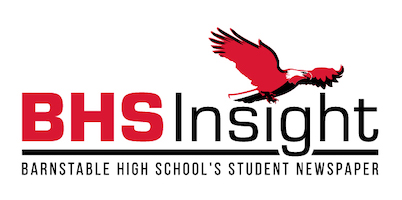Who is Your Dealer, Dunkin’ or Starbucks?
The Truth Behind Your Morning Cup of Joe
February 13, 2014
The line starts forming around 6:55a.m. Baggy eyes, sweatpants, an occasional businessman; you know the crowd. No matter where I travel in the country it’s always the same morning scene at any local coffee shop. In fact you’d think it was part of the design model to include a string of twitchy, overtired students. It seems as though lives are on the line if students can’t get their coffee fix to start the day. But then again, maybe they are?
According to a 2012 research study from The National Purchase Diary, 39 percent of young adults (18-24) consume coffee at least once a week, let alone every day. And with hundreds of Instagram posts of mocha lattes flooding our newsfeeds, it’s no question that the average student has an unhealthy relationship with his or her coffee.
Just walking to class each morning, my eyes can’t look away from the sea of styrofoam cups flooding the halls. But even throughout the last periods of the day, students can’t seem to let go of their empty $3 purchase. I’ve even seen a few of my classmates take a bite out of their own coffee cups! So what is it about this simple cup of coffee that’s caused a revolution turning well-rounded students into caffeine thirsty beasts?
Although coffee provides a caffeine jolt to wake us up in the morning after a sleepless night, it can actually be linked back to the reason for our sleep deprivation. Caffeine has the ability to remain in our bodies into late hours of the night when we are trying to fall asleep.
According to a Forbes article, Caffeine: The Silent Killer of Emotional Intelligence by Travis Bradberry, 25 percent of any coffee we drink at 8 a.m. will remain in our bodies until 8 p.m. that night. And any caffeine consumed after noon will linger at 50 percent strength by bedtime. This disrupts the quality of sleep we receive each night by reducing rapid eye movement (REM), or “deep sleep” that helps our bodies regenerate and recover emotions. We then wake up with horrible feelings of fatigue and lack of sleep, where we will only desire another cup of coffee and contribute to the nefarious cycle of caffeine.
And for those of you who feel coffee acts as a stress reliever in your life; think again, because it’s actually doing just the opposite. Caffeine inhibits lack of focus which can be a battle for any student enduring a brutally long test. But maybe if students hadn’t spent twenty minutes of their first block purchasing the coffee itself, they would be far less stressed when it came to missed material for the test.
But the science behind the coffee isn’t the only reason for this obsession among teens and adults. Among the majority of the female population, the sheer touch it adds to a wardrobe has caused addiction of individuals to treat their coffee as an accessory. And this insanity is becoming more and more evident among high school students who feel “cool” with their cup of joe. But this unusual embellishment comes at a premium. The average American spends over $1,000 just on coffee alone, each year. And I hate to break it to you, but there’s nothing sexy about a styrofoam cup or an overprinted logo.
And for all of you obsessed, coffee instagramers out there, I want you to be honest with yourself. What are you really drinking? Have you been led to believe that six sugars and a gallon of milk mixed with a teaspoon of coffee counts as the real deal? Well I want you to smack whoever told these obscene lies because everyone around you is suffering from second hand embarrassment.

